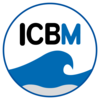Contact
Address
Carl von Ossietzky University Oldenburg Institute for Chemistry and Biology of the Marine Environment (ICBM) Schleusenstr. 1, 26382 Wilhelmshaven Germany
Projects
2024
Project:
‘Multishape’ – Warming effect in a multiple stressor context: role of thermal variability and resource supply shaping phytoplankton communities’ responses to environmental change (Miriam Gerhard et al., DFG)
Project:
Trait matching under temperature and nutrients (Konghao Zhu)
2023
Project:
‘MethanTrons’ – Effect of methan contamination at different temperatures on marine bacteria and phytoplankton communities (Carina Bunse et al., AQUACOSM_plus TA, EU)
2022
Project:
‘SubOptTrons’ – Unravelling the effects of supra-optimal temperatures and varying N:P ratios on North Sea microplankton communities (Antonia Uthoff et al., AQUACOSM_plus TA, EU)
Publications:
Ahme, A., Happe, A., Striebel, M., Cabrerizo, M.J., Olsson, M., Giesler, J., Schulte-Hillen, R., Sentimenti, A., Kühne, N., and John, U. (2024). Warming increases the compositional and functional variability of a temperate protist community. Science of The Total Environment 926, 171971. doi: 10.1016/j.scitotenv.2024.171971
Cabrerizo, M.J., Happe, A., Ahme, A., John, U., Olsson, M., and Striebel, M. (2024). Moderate and extreme warming under a varied resource supply alter the microzooplankton–phytoplankton coupling in North Sea coastal communities. Limnology and Oceanography. doi: 10.1002/lno.12718
Happe, A., Ahme, A., Cabrerizo, M.J., Gerhard, M., John, U., and Striebel, M. The experimental implications of the rate of temperature change and timing of nutrient availability on growth and stoichiometry of a natural marine phytoplankton community. Limnology and Oceanography. doi: 10.1002/lno.12613
Project:
‘Fluctotrons’ – Decoupling of deterministic and stochastic fluctuations in temperature and light for a natural freshwater plankton community (Miriam Gerhard et al., AQUACOSM_plus TA, EU)
2020-2021
The Planktotrons were used as Incubators for different temperature scenarios as large mesocosm experiments were not possible due to the COVID pandemic
Publication:
Heinrichs, A.L., Hardorp, O.J., Hillebrand, H., Schott, T., and Striebel, M. (2024). Direct and indirect cumulative effects of temperature, nutrients, and light on phytoplankton growth. Ecology and Evolution 14, e70073. doi: 10.1002/ece3.70073
Heinrichs, A.L., Happe, A., Koussoroplis, A.-M., Hillebrand, H., Merder, J., and Striebel, M. (2025). Temperature-dependent responses to light and nutrients in phytoplankton. Ecology 106, e70027. doi: 10.1002/ecy.70027
2019
Project:
‘Rainbowtron’ – Phytoplankton response to fluctuating light intensity and spectrum (Nils Hintz et al., DFG)
Publication:
Hintz, N.H., Zeising, M., and Striebel, M. (2021). Changes in spectral quality of underwater light alter phytoplankton community composition. Limnology and Oceanography 66, 3327-3337. doi: 10.1002/lno.11882
Project:
‘TempFluct’ – The effect of temperature fluctuation on a natural phytoplankton community (Charlotte Kunze et al., DFG)
Publication:
Kunze, C., Gerhard, M., Jacob, M., Franke, N.A., Schröder, M., and Striebel, M. (2022). Phytoplankton Community Performance Depends on the Frequency of Temperature Fluctuations. Frontiers in Marine Science 8. doi: 10.3389/fmars.2021.812902
2018
Project:
EcoMol: The ecology of molecules (ICBM PhD Research Training Group EcoMol, DFG)
Publications:
Dlugosch, L., Bunse, C., Bunk, B., Böttcher, L., Tran, D.Q., Dittmar, T., Hartmann, M., Heinrichs, M., Hintz, N.H., Milke, F., Mori, C., Niggemann, J., Spröer, C., Striebel, M., and Simon, M. (2023). Naturally induced biphasic phytoplankton spring bloom reveals rapid and distinct substrate and bacterial community dynamics. FEMS Microbiology Ecology 99, fiad078. doi: 10.1093/femsec/fiad078
Mori, C., Beck, M., Striebel, M., Merder, J., Schnetger, B., Dittmar, T., Pahnke, K., and Brumsack, H.-J. (2021). Biogeochemical cycling of molybdenum and thallium during a phytoplankton summer bloom: A mesocosm study. Marine Chemistry 229, 103910. doi: 10.1016/j.marchem.2020.103910
Mori, C., Beck, M., Hintz, N.H., Merder, J., Bunse, C., Dittmar, T., Dlugosch, L., Böttcher, L., Pahnke, K., Striebel, M., Schnetger, B., Simon, M., and Brumsack, H.-J. (2021). Biogeochemical thallium cycling during a mesocosm phytoplankton spring bloom: Biotic versus abiotic drivers. Geochimica et Cosmochimica Acta 313, 257-276. doi: 10.1016/j.gca.2021.08.002
Sutorius, M., Mori, C., Greskowiak, J., Boettcher, L., Bunse, C., Dittmar, T., Dlugosch, L., Hintz, N.H., Simon, M., Striebel, M., and Pahnke, K. (2022). Rare earth element behaviour in seawater under the influence of organic matter cycling during a phytoplankton spring bloom – A mesocosm study. Frontiers in Marine Science 9. doi: 10.3389/fmars.2022.895723
Project:
‘Vikingtrons’ – Connecting biodiversity and functional stability in a changing environment (Pablo Urrutia Cordero et al., VR Swedish Research Council)
2017
Project:
Non-random species loss in phytoplankton communities and its effect on ecosystem functioning (Miriam Gerhard et al., DAAD)
Publications:
Gerhard, M., Mori, C., and Striebel, M. (2021). Nonrandom species loss in phytoplankton communities and its effect on ecosystem functioning. Limnology and Oceanography 66, 779-792. doi: 10.1002/lno.11642
Gerhard, M., Schlenker, A., Hillebrand, H., and Striebel, M. (2021). Environmental stoichiometry mediates phytoplankton diversity effects on communities’ resource use efficiency and biomass. Journal of Ecology 110, 430-442. doi: 10.1111/1365-2745.13811
Project:
Coastal Ocean Darkening effects on Plankton: an indoor mesocosm experiment (Liisa Kallajoki et al. BMBF)
Publications:
https://taz.de/Oekosystem-Meer/!6037891/ (14.10.2024)
Mustaffa N. I. H., Kallajoki, L., Biederbick, J., Binder, F. I., Schlenker, A. and Striebel, M. (2020). Coastal Ocean Darkening Effects via Terrigenous DOM Addition on Plankton: An Indoor Mesocosm Experiment. Frontiers in Marine Science 7. doi: 10.3389/fmars.2020.547829
Mori, C., Beck, M., Striebel, M., Merder, J., Schnetger, B., Dittmar, T., Pahnke, K., and Brumsack, H.-J. (2021). Biogeochemical cycling of molybdenum and thallium during a phytoplankton summer bloom: A mesocosm study. Marine Chemistry 229, 103910. doi: 10.1016/j.marchem.2020.103910
2016
Project:
Interactive effects of warming and nutrient decrease on phytoplankton biomass and community structure in the North Sea (Xochitl Elias et al., Thesis)
2015
Project:
Warming and oligotrophication cause shifts in freshwater phytoplankton communities (Laura Verbeek et al., Biodiversa EU)
Publication:
Verbeek, L., Gall, A., Hillebrand, H., and Striebel, M. (2018). Warming and oligotrophication cause shifts in freshwater phytoplankton communities. Global Change Biology 24, 4532-4543. doi: 10.1111/gcb.14337
Project:
Multitrophic trait dynamics under complex external forcing (Andrea Gall et al., DynaTrait DFG)
2014
Project
A novel indoor mesocosm facility for aquatic biodiversity and food web research (Andrea Gall et al. DynaTrait DFG)
Publication:
Gall, A., Uebel, U., Ebensen, U., Hillebrand, H., Meier, S., Singer, G., Wacker, A., and Striebel, M. (2017). Planktotrons: A novel indoor mesocosm facility for aquatic biodiversity and food web research. Limnology and Oceanography: Methods 15, 663-677. doi: 10.1002/lom3.10196


